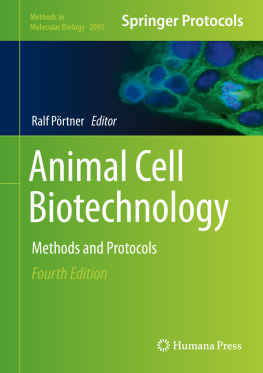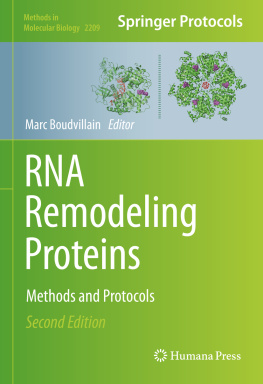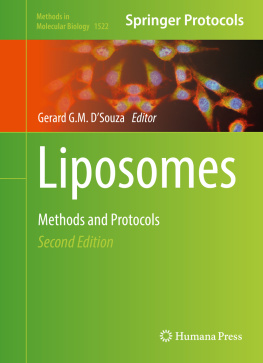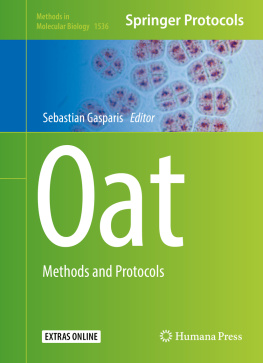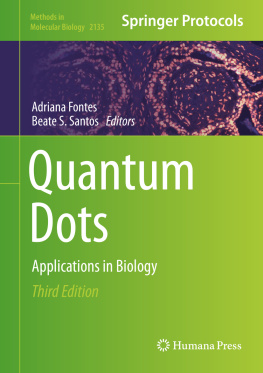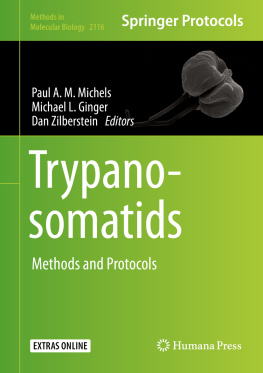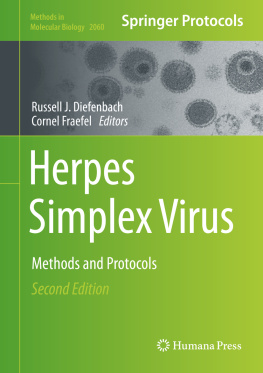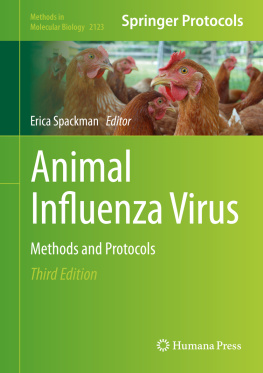Ralf Pörtner (editor) - Animal cell biotechnology : methods and protocols
Here you can read online Ralf Pörtner (editor) - Animal cell biotechnology : methods and protocols full text of the book (entire story) in english for free. Download pdf and epub, get meaning, cover and reviews about this ebook. year: 2020, publisher: Springer US, genre: Home and family. Description of the work, (preface) as well as reviews are available. Best literature library LitArk.com created for fans of good reading and offers a wide selection of genres:
Romance novel
Science fiction
Adventure
Detective
Science
History
Home and family
Prose
Art
Politics
Computer
Non-fiction
Religion
Business
Children
Humor
Choose a favorite category and find really read worthwhile books. Enjoy immersion in the world of imagination, feel the emotions of the characters or learn something new for yourself, make an fascinating discovery.
- Book:Animal cell biotechnology : methods and protocols
- Author:
- Publisher:Springer US
- Genre:
- Year:2020
- Rating:5 / 5
- Favourites:Add to favourites
- Your mark:
- 100
- 1
- 2
- 3
- 4
- 5
Animal cell biotechnology : methods and protocols: summary, description and annotation
We offer to read an annotation, description, summary or preface (depends on what the author of the book "Animal cell biotechnology : methods and protocols" wrote himself). If you haven't found the necessary information about the book — write in the comments, we will try to find it.
Animal cell biotechnology : methods and protocols — read online for free the complete book (whole text) full work
Below is the text of the book, divided by pages. System saving the place of the last page read, allows you to conveniently read the book "Animal cell biotechnology : methods and protocols" online for free, without having to search again every time where you left off. Put a bookmark, and you can go to the page where you finished reading at any time.
Font size:
Interval:
Bookmark:

For further volumes: http://www.springer.com/series/7651
For over 35 years, biological scientists have come to rely on the research protocols and methodologies in the critically acclaimedMethods in Molecular Biologyseries. The series was the first to introduce the step-by-step protocols approach that has become the standard in all biomedical protocol publishing. Each protocol is provided in readily-reproducible step-by-step fashion, opening with an introductory overview, a list of the materials and reagents needed to complete the experiment, and followed by a detailed procedure that is supported with a helpful notes section offering tips and tricks of the trade as well as troubleshooting advice. These hallmark features were introduced by series editor Dr. John Walker and constitute the key ingredient in each and every volume of theMethods in Molecular Biologyseries. Tested and trusted, comprehensive and reliable, all protocols from the series are indexed in PubMed.

This Humana imprint is published by the registered company Springer Science+Business Media, LLC, part of Springer Nature.
The registered company address is: 233 Spring Street, New York, NY 10013, U.S.A.
Mammalian cells are used in industry as well as in research for a variety of applications. Examples are the production of monoclonal antibodies or proteins for diagnostic or therapeutic use, production of viral vaccines as well as cultivation of tissue cells for artificial organs or for gene therapy. Beside the techniques required for establishing specific cell lines, techniques are required for optimized cultivation in small- and large-scale, cell characterization and analysis, purification of biopharmaceuticals and vaccines.
Animal Cell Biotechnology: Methods and Protocols, Fourth Editionconstitutes a comprehensive manual of state-of-the-art techniques for setting up mammalian cell lines and media for the development of biopharmaceuticals and optimizing critical parameters for cell culture considering the whole cascade from the lab to the final production. Special emphasis was put on model-assisted concepts. Scientists with long-refined expertise describe cutting-edge techniques for the production of therapeutic proteins and vaccines. Capturing the major advances that have occurred in both science and the technology of these biopharmaceuticals, this important book covers the powerful new techniques used in cell line and media development, optimizing process techniques and process strategies, use of model-assisted tools for process design and optimization, and in analysis. Topics include cell line and media development, techniques for process development, model-based techniques for process development, process analysis, and downstream techniques. The volume is divided into five parts that reflect the processes required for different stages of production.
In Part I, basic techniques for establishment of near-physiological cell-cycle synchronization and for preparation of assay ready cells for routine use in bioassays are addressed.
Part II addresses tools for process development, especially miniaturized bioreactor concepts, perfusion techniques, and application of single-use-bioreactors.
Part III covers model-based techniques, especially the workflow for the setup of mechanistic process models, estimation of model parameters, model-assisted Design of Experiments, and seed train optimization.
Part IV details analytical techniques, including quantification and glycosylation analysis of antibodies, Raman microscopy, optical sensors and turbidimetry, and dielectric spectroscopy.
Part V describes downstream techniques, for example, continuous chromatography purification of virus-based biopharmaceuticals as well as purification of kinase Isoforms from transient expression.
In summary, this volume constitutes a comprehensive manual of state of the art and new techniques for setting up mammalian cell lines for production of biopharmaceuticals, and optimizing critical parameters for cell culture considering the whole cascade from the lab to the final production. Inevitably, some omissions will occur in the test, but the authors have sought to avoid duplications by extensive cross-referencing to chapters in other volumes of this series and elsewhere. We hope the volume provides a useful compendium of techniques for scientists in industrial and research laboratories that use mammalian cells for biotechnology purposes. The editor is grateful for the support of all the contributors, the series editor Prof. John Walker, Hertfordshire, UK, and the publishers who have made this volume possible.
Font size:
Interval:
Bookmark:
Similar books «Animal cell biotechnology : methods and protocols»
Look at similar books to Animal cell biotechnology : methods and protocols. We have selected literature similar in name and meaning in the hope of providing readers with more options to find new, interesting, not yet read works.
Discussion, reviews of the book Animal cell biotechnology : methods and protocols and just readers' own opinions. Leave your comments, write what you think about the work, its meaning or the main characters. Specify what exactly you liked and what you didn't like, and why you think so.

